Brief viewing notes, July 2016
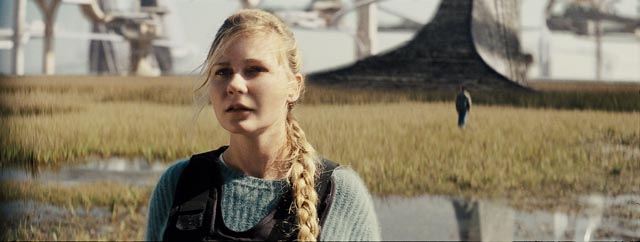
Midnight Special (Jeff Nichols, 2016)
The strength of Jeff Nichols’ work is his ability to discern the textures and atmosphere of place and the ways in which they play on and shape character. His films have tended to be more about mood rather than story. There’s a real emotional and psychological richness to a film like Mud (2012). Which is why I was so disappointed by his latest work, Midnight Special (2916). Everything about the film seems barely sketched in – the characters, the events, the high concept. It feels to me as if Nichols filmed a rushed first draft, leaving so much un- and underdeveloped. Perhaps this has something to do with his decision to leave the closely observed naturalism of his earlier work for grand scale science fiction. Whatever the reason, the film never comes together, raising issues, introducing characters and plot threads, which are never followed through; things happen, people appear and disappear almost at random … and it all ends with an explosion of digital effects which resolve nothing. Fine photography and an excellent cast can’t overcome the film’s half-baked conception.
*
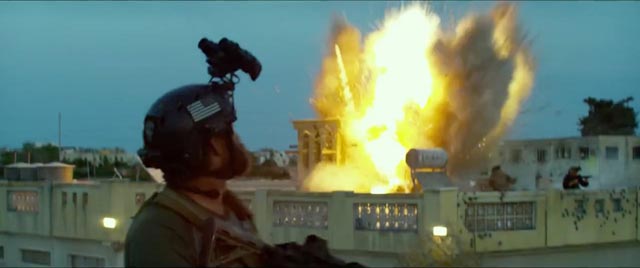
13 Hours (Michael Bay, 2016)
If Michael Bay is much ridiculed, he has done a great deal to earn that derision. The Transformers movies and Bad Boys 1 and 2 are some of the most tediously unwatchable extrusions of the popular movie-making machine we’ve ever been subjected to. But, to my mind at least, he has also made some fine pieces of entertainment. For all their frenetic action and bombast, The Rock and Armageddon are both fun rides which bear up to repeat viewing; The Island, although an uncredited remake of the low budget Clonus, aka Parts: The Clonus Horror (Robert S. Fiveson, 1979), is an excellent sci-fi action movie with a well-thought-out script. His best film, in which his penchant for glossy advertising-styled imagery blends perfectly with theme, is Pain & Gain (2013), but to my surprise his latest is almost as good. 13 Hours (2016) could so easily have been a blast of Right-wing jingoism, but by sticking close to the ground in its telling of the events in Benghazi in 2012, Bay has made a combat movie tightly focused on visceral experience, the imminent possibility of catastrophic injury and death; harsh and physical, it ends up where all great combat movies end – with the realization that wars are senselessly wasteful and the blood and pain at a personal level ultimately futile. The closest it gets to politics is in its unflattering depiction of the CIA station chief, a dull bureaucrat whose inability to deal with crisis makes things worse, and an overriding sense of the stupidity of engagement in countries about which the US knows nothing and understands less. While it inevitably takes the point of view of the American military contractors engaged in the fight – pushing it towards the racism of Ridley Scott’s Black Hawk Down (2001), which viewed Somalis as a swarming horde akin to the bugs of Starship Troopers (1997), a film which satirized the xenophobia which Scott merely reiterated – 13 Hours ends with a moment in which it contemplates the violent deaths experienced by the other side, allowing the Libyans their own moment of loss and futility, a reminder that in events like these each American death is answered with dozens of foreign deaths, an accounting which harks back to the repulsive idea that the life of the Other is of less value than our own.
*
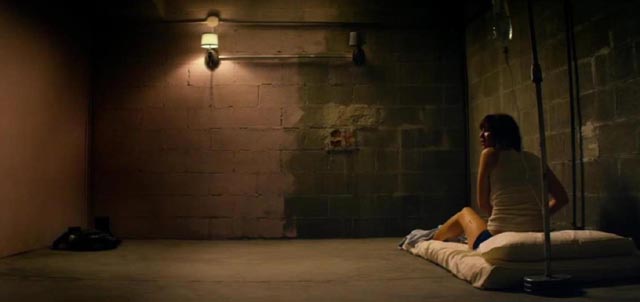
10 Cloverfield Lane (Dan Trachtenberg, 2016)
Cloverfield (Matt Reeves, 2008) was a clever idea, a Godzilla-style monster movie perceived entirely from ground level by the civilians being trampled. Its big weakness was the utter vapidity of the characters; it was difficult to care about whether they were getting eaten or stomped. 10 Cloverfield Lane (2016) bears no resemblance to the earlier film, although its conceit is that it takes place in the same world under threat of alien invasion. In every particular, it’s a better, more interesting movie. Michelle (Mary Elizabeth Winstead) is running from a failed relationship when her car goes off the road. She wakes up chained to a mattress in a bare concrete room, apparently the prisoner of a bad-tempered man, Howard (John Goodman), who claims that he rescued her and saved her life from some catastrophe which has rendered the world uninhabitable. She’s in the bunker Howard personally built as a refuge from … what? Nuclear war? Alien invasion? Howard isn’t too clear about the nature of the disaster, only the fact that she owes him gratitude for saving her life. He shifts between playful and solicitous and angry and menacing with disturbing rapidity. Along with another inhabitant of the bunker, Emmett (John Gallagher Jr), Michelle settles uneasily into this confined life. It becomes apparent that there really has been a disaster of some kind and that the surface is indeed toxic; but it also becomes apparent that Howard is seriously deranged, possibly having kidnapped other young women and done who knows what to them in his secret lair. The multiple writers (including Whiplash’s Damien Chazelle) and first-time director Dan Trachtenberg keep things tensely unbalanced, juggling serial killer tropes with big-budget-style climactic mayhem as Michelle gradually transforms into a strong, resourceful heroine who triumphs in a finale which would be absurd if all the groundwork hadn’t been so carefully laid.
*
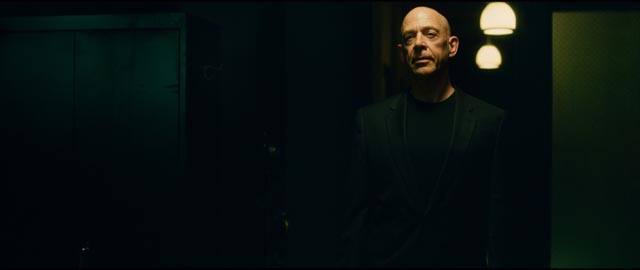
Whiplash (Damien Chazelle, 2014)
And speaking of Whiplash, I finally got around to watching it after a couple of years’ urging by a friend. To be honest, the subject didn’t interest me that much, and I’m not a jazz fan, but I was assured that it was about so much more … Yes, it’s pretty intense, but I really couldn’t engage with the characters. I found aspiring drummer Andrew (Miles Teller) pretty irritating, his passion for music stated repeatedly but never really explored, and despite an impressive performance from J.K. Simmons as Fletcher, Andrew’s teacher at the conservatory, the guy seemed nothing more than an egotistical asshole who takes pleasure in psychologically destroying kids for what he claims is a greater artistic good. The movie is strenuously sweaty and repetitive, playing the same kind of dramatic conflicts over and over again. I’m in the minority on this highly-rated film, but I just couldn’t get into it.
*
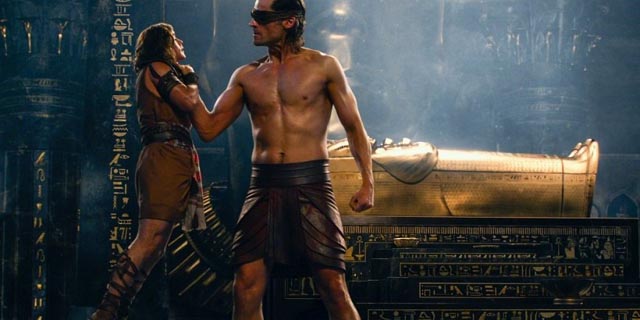
Gods of Egypt (Alex Proyas, 2016)
Which no doubt makes me look like a fool when I say I thoroughly enjoyed Alex Proyas’ Gods of Egypt (2016), a patently absurd fantasy along the lines of the old Ray Harryhausen chestnut Clash of the Titans (1981). Although it ultimately lacks the richness of Tarsem Singh’s Immortals (2011), it shares with that film the confidence to take its imaginative absurdities completely seriously. Ancient history and myth are transformed into gods-and-monsters eye candy swirling around a character not unlike Sabu’s Thief of Bagdad (1940), a plucky adolescent going up against corrupt powers which hold mere mortals in contempt. If I were to point to a single thing which drags Gods down, it would be Gerard Butler’s thick, thuggish presence as the villain Set, whose every word breaks the fragile illusion of the fantasy. Certainly not Proyas’ finest work (that remains Dark City [1998]), but it offers more pleasures than any of the leaden superhero movies currently flowing off the assembly line.
*
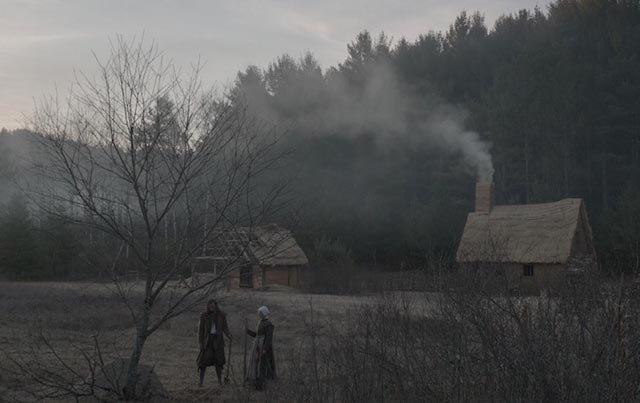
The Witch (Robert Eggers, 2015)
Although an extreme example, Gods of Egypt adheres to a general pop culture tendency to treat history as fantasy; other times are viewed through a contemporary lens, transformed into lessons supposedly relevant to our understanding of the present. Much more rare is the attempt to see the past not through our modern eyes, but as if through a consciousness rooted in the period in which the story is set. In fact, I can think of only one movie with which to compare Robert Eggers’ The Witch (2015): Kevin Brownlow and Andrew Mollo’s remarkable evocation of 17th Century England, Winstanley (1975), in which the complex religio-political ideas of the time are addressed as they were understood by the people of that time. Eggers, writing and directing his first feature, has embedded the story of a family in early colonial America in the consciousness of that period, drawing virtually all the dialogue from contemporary texts and transcripts. This remarkable film is steeped in a view of the world which sees the threat of the devil as very real and immediate; and yet this society is deeply riven by doctrinal disagreements brought to the New World by dissenters fleeing the rigidity of the politically determined state religion of England. Driven from the security of a small settlement because he refuses to accept the authority of church elders, William (Ralph Ineson) and his family establish a homestead on the edge of a primal forest within which apparently live adherents to a much older religion. With the disappearance of a baby, the family fractures, with William and Katherine (Kate Dickie) growing distrustful of their adolescent daughter Thomasin (Anya Taylor-Joy), whose burgeoning sexuality is taken as a sign of satanic influence. The Witch is dark, dense and mysterious, its world rife with supernatural undercurrents against which faith in God ultimately proves powerless. Eggers shows us a past which is convincing in every detail, but which is utterly alien to our own understanding of the world.
*
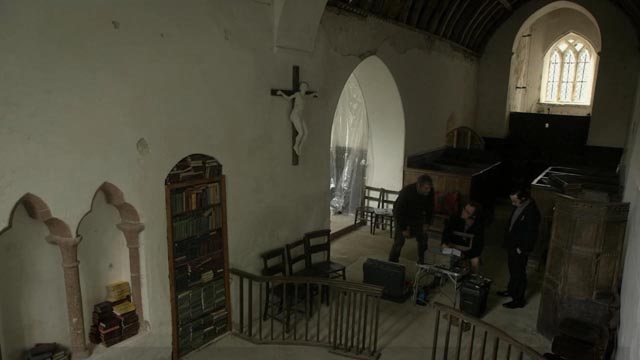
The Borderlands, aka Final Prayer (Elliot Goldner, 2013)
Far less ambitious, but also attempting to evoke an ancient sense of the numinous lurking beneath the banal surface of the world, Elliot Goldner’s “found-footage” movie The Borderlands (2013) conjures up memories of Nigel Kneale’s brilliant television film The Stone Tape (Peter Sasdy, 1972). A team of investigators equipped with multiple surveillance cameras (including body-mounted) are sent to investigate odd occurrences at a church in rural England. Like the early Paranormal Activity movies, this one creates unease with sounds and barely glimpsed movements at the edge of the frame rather than big moments or graphic effects. Most commenters on-line seem to find it dull and uneventful, though I thought it was quite creepy and atmospheric in its early stages. Once the team enter a hidden underground system of tunnels, there are echoes of As Above, So Below and The Pyramid (both 2014), though The Borderlands ends up in a more interesting place, with the Earth itself a living thing which feeds on those who descend into it.
*
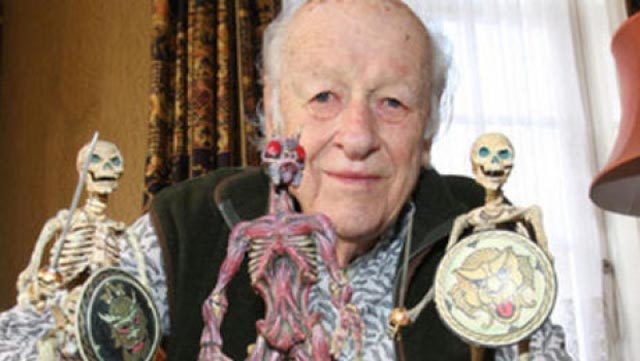
Ray Harryhausen: Special Effects Titan
(Gilles Penso, 2011)
By the way, speaking of Ray Harryhausen, Gilles Penso’s documentary Special Effects Titan (2011) provides a fairly good overview of the stop-motion master’s career, with behind-the-scenes footage, clips from the movies, and a plethora of tributes from a wide range of filmmakers who have been influenced by his work (mostly starting in childhood). It suffers a bit from the current tendency to think that nothing should be lingered over, breathlessly racing from one detail to the next, which means that anyone interested in just how the effects were created will have to go looking for one of the many books about Harryhausen. Nonetheless, the doc does capture something of the flavour of one of the odd byways of popular culture, a strange and personal art which has essentially vanished since the advent of computers. Arrow’s region B Blu-ray is packed with extras which fill in some of the glossed over gaps in the doc itself – additional interviews, deleted scenes, a couple of post-screening Q&As, and a commentary track.
*
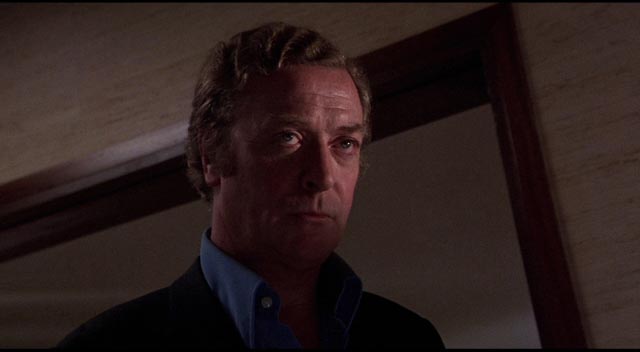
The Holcroft Covenant (John Frankenheimer, 1985)
I’ve mentioned before that John Frankenheimer too often sank into unimaginative formula in his later career, and there’s perhaps no better example of this tendency than this 1985 adaptation of a typically turgid Robert Ludlum thriller. The craft is reasonably polished, the action staged efficiently, and the cast better than it needs to be – Michael Caine, Anthony Andrews, Lili Palmer, Mario Adorf, Michael Lonsdale, Bernard Hepton, Victoria Tennant. But as the story goes through its convoluted motions, Frankenheimer can barely breath any life into it. Michael Caine is the son of a high-ranking Nazi, taken from Germany as a baby and raised as an American. A successful businessman, he is suddenly drawn into a plot rooted in the war when he learns that he is to be put in charge of a massive amount of looted money tucked away in a Swiss bank, intended supposedly to right some of the wrongs committed by the regime his father was a part of. No one he meets is what he or she seems and he gradually realizes that he’s simply a pawn in a scheme to raise a Fourth Reich by destroying the world economy and paving the way for a new fascist dictatorship. It’s all rather tired and dramatically weightless, with barely a glimpse of the style Frankenheimer was once capable of.
*
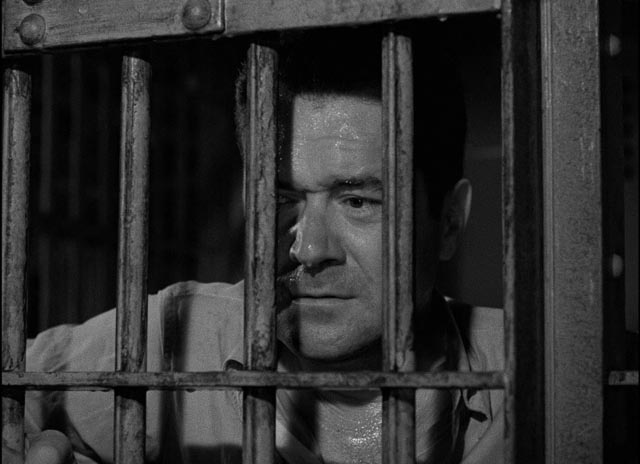
Try and Get Me! (Cy Endfield, 1950)
Cy Endfield was one of the Hollywood talents who was driven out by the anti-communist witch hunts of the late ’40s and early ’50s, heading like Joseph Losey and Edward Dmytryk to England. But before he left, having started out making shorts and minor B-movies, in 1950 he directed a couple of powerful, socially conscious thrillers: The Underworld Story and The Sound of Fury, aka Try and Get Me! The former, released on DVD by Warner Archive, is a harsh newspaper story along the lines of Billy Wilder’s Ace in the Hole (1951). The latter, another indictment of an opportunistic press, has just come out on Blu-ray from Olive Films (while we can be grateful for that, it suffers from Olive’s bare bones approach; some contextual extras would have been appreciated). Try and Get Me! is as bleak as Fritz Lang’s mob indictment, Fury (1936), but complicates the situation by having its protagonist Howard Tyler (Frank Lovejoy) actually be guilty, but still not deserve his fate.
Howard, a World War Two vet with a wife and young son, is unable to find work. Desperate, he falls in with Jerry Slocum, a slick and manipulative hood (Lloyd Bridges at his best), getting paid well to drive a getaway car for various petty robberies. When Slocum’s big score kidnapping goes wrong and the victim ends up dead, newspaperman Gil Stanton (Richard Carlson) writes extremely inflammatory articles at the urging of his editor. The film follows parallel lines as Howard fights a losing battle with his conscience while Gil and his mentor Dr. Simone (Renzo Cesana) debate the morality of stirring up vigilante passions which allow for no understanding of motive and mitigating circumstances. Howard is just an ordinary guy fallen on hard times who slipped into a series of bad decisions without actually being a bad man. Gil comes to understand this too late and he and the forces of law are powerless to prevent the mob from carrying out a lynching.
It’s not surprising that a movie like this would have soured Hollywood on Endfield at a time when it was struggling to stave off HUAC accusations that threatened its business. It’s impossible to say what kind of career he might have had if he’d stayed, but the momentum he was building with these two 1950 features got diverted in exile. In England he struggled for work, making a number of minor B-movies before turning out the closest thing to his bleak noirs with Hell Drivers (1957); one of the great British films of the decade, this is a harsh depiction of working life on the margins, with a great cast lead by Stanley Baker, who formed a company with Endfield which a few years later would produce the biggest film of his career: Zulu (1964).
Comments